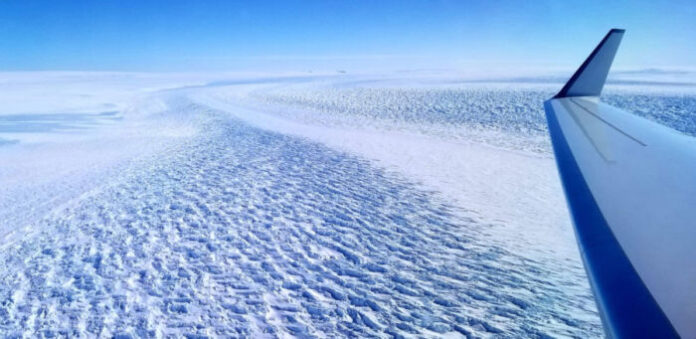
Denman Glacier in East Antarctica retreated 3.4 miles (5.4 kilometers) from 1996 to 2018, according to a new study by scientists at NASA‘s Jet Propulsion Laboratory and the University of California, Irvine. Their analysis of Denman — a single glacier that holds as much ice as half of West Antarctica — also shows that the shape of the ground beneath the ice sheet makes it especially susceptible to climate-driven retreat.
Until recently, researchers believed East Antarctica was more stable than West Antarctica because it wasn’t losing as much ice compared to the glacial melt observed in the western part of the continent. “The ice in West Antarctica has been melting faster in recent years, but the sheer size of Denman Glacier means that its potential impact on long-term sea level rise is just as significant,” said Eric Rignot, project senior scientist at JPL and professor of Earth system science at UCI. If all of Denman melted, it would result in about 4.9 feet (1.5 meters) of sea level rise worldwide.
Using radar data from four satellites, part of the Italian COSMO-SkyMed mission that launched its first satellite in 2007, the researchers were able to discern the precise location where the glacier meets the sea and the ice starts to float on the ocean, or its grounding zone. The scientists were also able to reveal the contours of the ground beneath portions of the glacier using data on ice thickness and its speed over land.
Denman’s eastern flank is protected from exposure to warm ocean water by a roughly 6-mile-wide (10-kilometer-wide) ridge under the ice sheet. But its western flank, which extends about 3 miles (4 kilometers) past its eastern part, sits over a deep, steep trough with a bottom that’s smooth and slopes inland. This configuration could funnel warm seawater underneath the ice, making for an unstable ice sheet. The warm water is increasingly being pushed against the Antarctic continent by winds called the westerlies, which have strengthened since the 1980s.
Currently, that extension is melting from the bottom up at a rate of about 10 feet (3 meters) annually. That’s an increase over its annual melt average of 9 feet (2.7 meters).
“How fast this can happen? Hard to say, since there are many factors coming into play, for example the narrowness of the channel along which Denman is retreating may slow down the retreat”, explained to BBC Dr Virginia Brancato, from Nasa’s Jet Propulsion Laboratory and a former scholar at the University of California at Irvine (UCI).
Photo by NASA



































